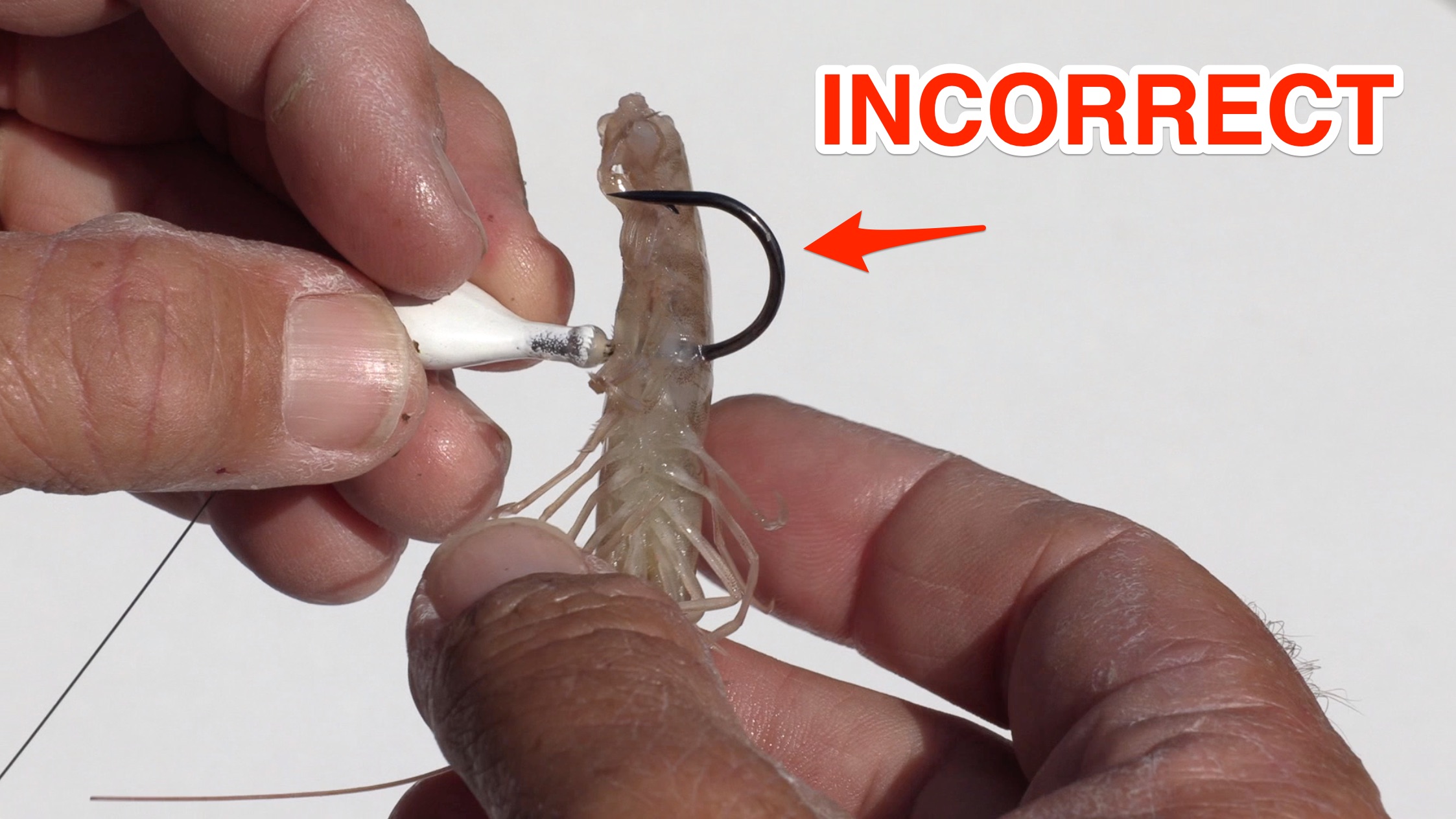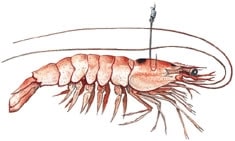Using a live shrimp as bait is one of the best ways to catch saltwater fish like redfish, tarpon, seatrout, bonefish, snook, and many more. Almost all gamefish that can swim will eat a live shrimp if they can find them easily where they live.
Are you not sure how to rig a shrimp? Here are five simple methods that have been used for years.
Shrimp are one of the most effective and irresistible baits for catching inshore saltwater species like redfish, trout, snook, tarpon, and more Their familiar shape, tantalizing scent, and lively action triggers instant strikes from hungry gamefish But what’s the best way to rig up these natural baits? Read on for 5 expert tips for rigging shrimp to trigger more bites.
Why Fish with Shrimp?
Before jumping into shrimp rigging methods. let’s first review why shrimp make such excellent bait
-
Natural food source – Shrimp are a primary food source for many gamefish The shape and scent of shrimp triggers instinctive feeding responses,
-
Enticing scent – The smell of shrimp travels far underwater to pull in fish from a distance. Chumming with shrimp parts sends out an irresistible scent trail.
-
Movement – From subtle tail flicks to major swim bursts, the action of a live shrimp mimics wounded prey to draw predator strikes.
-
Durability – Shrimp stay lively on the hook longer than fish cut bait. Their hard shells also keep baits intact.
-
Availability – Shrimp are easy to obtain at tackle shops or catch yourself with a cast net.
Now let’s get into the nitty gritty of how to expertly rig shrimp baits for fishing…
Thread Through the Carapace for Drifting
When drifting or slow trolling shrimp baits, you want to utilize the shrimp’s natural swimming action to give your presentation maximum life.
The most common method is to thread the hook straight through the carapace (shell) without contacting the vital organs. This allows the shrimp to kick freely and undulate in the current.
Target the thicker top center section of the shell. Keep the hook shank hidden inside the shell to make it weedless. The shrimp will stay lively and attract fish from a distance as it wafts along.
[YouTube video demonstrating this rigging method]
Hook Through the Head for Casting
When casting shrimp longer distances, hooking through the head creates a more streamlined bait. The heavier head portion flies forward, allowing better hooksets at the strike.
Pass the hook underneath the shrimp’s “chin” area and out through the top shell. Avoid the dark spots on the underside which contain vital organs. Leave as little hook exposed as possible for a weedless setup.
Aim for thicker areas of the shell so the shrimp stays pinned in place. The head area tends to be tougher and grippier for solid hook penetration.
[YouTube video demonstrating this rigging method]
Thread Through the Tail for Distance
Removing the tail fan section of a shrimp and threading just the tail onto the hook creates an aerodynamic bait for maximum casting distance.
Gripping the tail, gently twist and pull to detach the wider fan portion. Then insert the hook into the narrower meaty section of tail and push through the end.
You can also insert the hook into the side of the tail for a weedless presentation. Burying the barb into the flesh helps hold the shrimp in place.
The tail will pulsate with the hook hidden inside to mimic an injured baitfish attempting to swim away.
Weedless Weighted Hook in the Belly
To punch shrimp baits into heavy cover like grass flats and mangroves, a weedless jig head allows for accurate presentations.
Thread a weighted jig hook into the underside of the shrimp, entering at an angle behind the head and exiting through the top shell. Rotate the hook shank inwards to bury the point into the belly flesh.
The shrimp will fall hook point down and the jig weight will punch through vegetation for bottom-hugging placement. Twitching the rod makes the shrimp kick enticingly.
Half a Shrimp for Cut Bait
When using dead or frozen shrimp, cut bait strips can be just as effective as whole. The scent attracts fish and allows you to stretch your bait supply.
Cut shrimp in half lengthwise leaving the tough vein/tail section intact. Hide your hook up inside the meaty half shell. The shell helps keep tender shrimp flesh on the hook.
Tip: Threading the hook through the vein/tail gives a built-in bait holder for casting cut sections. Chum with other shrimp parts to send out a scent trail.
Pro Tips for Presenting Shrimp Baits
To get the most out of shrimp baits, keep these expert tips in mind:
-
Match hook size to shrimp size. Scale down for larger hooks for bigger shrimp.
-
Keep the hook shank mostly buried for a weedless, natural look.
-
Let shrimp soak in saltwater for added flavor and to toughen flesh.
-
Cast net your own shrimp or buy lively select sizes from bait shops.
-
Use circle hooks with shrimp to prevent gut hooking fish.
-
Add bead chain rattles to make baits louder.
-
Sweeten rigs with Fishbites or Pro-Cure scent baits.
-
Drift or troll directly into currents and tidal flows.
Now that you’re armed with shrimp rigging knowledge, it’s time to get out on the water and start catching! Shrimp baits consistently produce inshore and are easy to fish for anglers of all experience levels. Follow these tips to take your shrimp fishing results to the next level.

How to Tail Hook a Live Shrimp

It’s best to hook the shrimp through the tail when you need to cast far, like when you’re trying to get a bait in front of a fish that’s moving slowly. This will move the heavier head section to the front and make it less likely that the shrimp will tear off on the cast. Also, removing the shrimp’s tail fan will emit a scent that attracts fish. After cutting off the tail fan, put the hook through the middle of the tail so that the whole shank is hidden. Then, push the point of the hook through the bottom of the tail. Now push the tail over the hook eye and knot to hide them. A baitholder-style hook will help prevent the shrimp from sliding off the hook.
How to Rig a Live Shrimp to Drift in the Current

When you drift a live shrimp in the current or dangle it below a float rig or popping cork, you should use its natural kicking action to your advantage. This is what many game fish do to make them strike. The best way to do this is to hook the shrimp through its carapace. However, it is important to avoid the shrimp’s stomach and pancreas, which appear as two translucent dark spots. In version one, the hook is threaded crosswise through the carapace, just under the tip of the shell.
Rigging Live Shrimp In The Head vs. Tail (Best Way To Rig Shrimp)
How do you rig a shrimp?
Run the hook crosswise (bottom) or up through the tip of the tail. Victor Cormier Yet another way to rig a shrimp for basic casting and drift-fishing is to run the hook through the tip of the tail, either crosswise or up through the center of the tail. The latter keeps the hook point clear of bottom snags.
Can I eat raw shrimp?
Eating raw shrimp is not recommended. Raw shrimp can contain bacteria that can cause food poisoning. It is also a good source of purines, which can trigger gout attacks. If you want to eat shrimp, cook it thoroughly to reduce the risk of food poisoning and to help prevent gout attacks. Cook shrimp until it is opaque and pink to ensure that it is safe to eat.
What rig do I need for a shrimp rig?
Join the Insider Club and get access to our Entire Library of Mastery Fishing Courses In most cases, the majority of strikes will come right at the bottom or close to it. All you need for this simple shrimp rig is a 20lb Monofilament leader going down to a circle hook, with a split-shot weight, and live shrimp.
Can You Rigg live shrimp on a hook for saltwater fishing?
You simply can’t go wrong with rigging live shrimp on a hook for inshore saltwater fishing! It’s so easy even kids can do it (as you’ll see with young Shauna catching lots of snapper in this video). Everything eats a shrimp so this is a fantastic method for quick tight lines for all beginner anglers or those looking to help their kids catch a fish.
